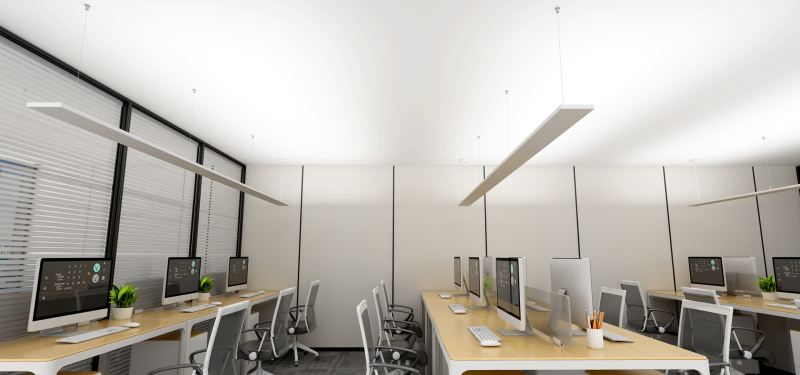
How should office lighting be?
Whether in homes or offices, poor lighting is one of the most common design mistakes. Plus, no matter what room your office is in, bad lighting is an added source of stress. Moreover, no matter how good office furniture you choose, if your lighting options are not good enough, integrity cannot be achieved in your office.
According to research, workers are not happy to work under too bright or dim light. Incorrect lighting in offices can negatively affect the productivity of employees and the quality of work produced. It can also be quite dangerous in terms of safety and human health. Insufficient lighting not only causes vision problems, but also increases the likelihood of accidents and injuries. Too bright light or insufficient lighting causes many health problems such as watery eyes, burning, headaches, and eye strain for people working in office environments. So, what should be the right lighting and which light source should you choose for your office? Here are some tips to help you decide…
Types of lighting
The first thing you need to decide is what lighting to choose for your office. There are many different options to choose from. Each type of lighting has its advantages and disadvantages. You can combine some types of lighting to create a properly lit work environment. The types of lighting that can be used together for offices are;
Natural Light – Daylight
Windows are the most valuable and beautiful areas of the office. They are usually designed for managers with corner offices because they take up less space than office space. Windows allow both ventilation in the office and natural light to illuminate the office. A number of research studies on lighting, including one published in the UK, show that exposure to natural light significantly increases employee job satisfaction. Natural light also has a positive effect on our mental health and general temperament that artificial light cannot. For this reason, it is important to use windows with a source of natural light in offices. Unfortunately, depending on your workplace, natural light may not always be the right choice. During the winter months, you will definitely need additional lighting options for the very early and late hours of the day.
Surface Lighting
Although overhead lighting is often preferred for lighting offices, it should not be the only option. It can also often cast shadows or make the office environment too gloomy. It must be combined with other types of lighting. At the same time, low brightness lamps should always be used for health reasons. This is because overhead fluorescent lighting can cause many health problems, from hyperactivity to sleep problems.
Local (Next) Lighting
Local lighting is called task lighting when additional lighting is used to provide functionality in a specific area. Reading lamps, ceiling lamps over dining tables are good examples of task lighting. In this type of lighting, it is aimed to increase the level of light in the workplace or in the immediate surroundings according to the environment. Local lighting can usually be controlled and adjusted by the user, providing flexible use for any user.
Ambient Lighting
Are you stressed at work? This may have more to do with the lighting in your office than your workload. Ambient lighting has a low intensity that can help create a more peaceful atmosphere. In offices, you may need ambient lighting such as recessed or ceiling-mounted fixtures and wall sconces.
Corrective Lighting
Corrective lighting can be used additionally to maintain the balance between light and shadow in offices. Corrective lighting creates a balance between different types of lighting in the office. Natural light from outside acts as a mediator between the main lighting source used and the computer/mobile screens used. This type of lighting is very motivating for workers.

